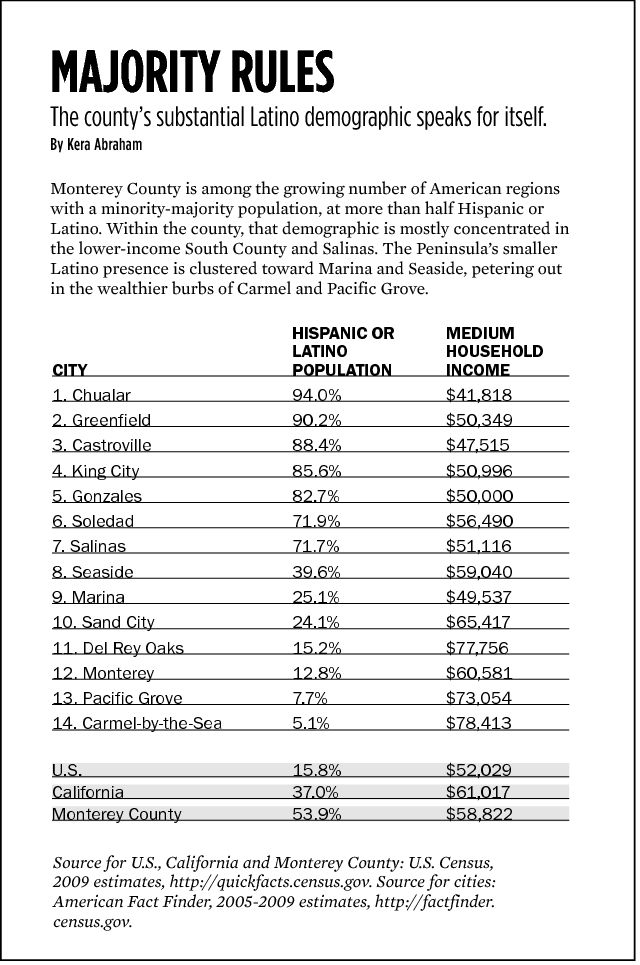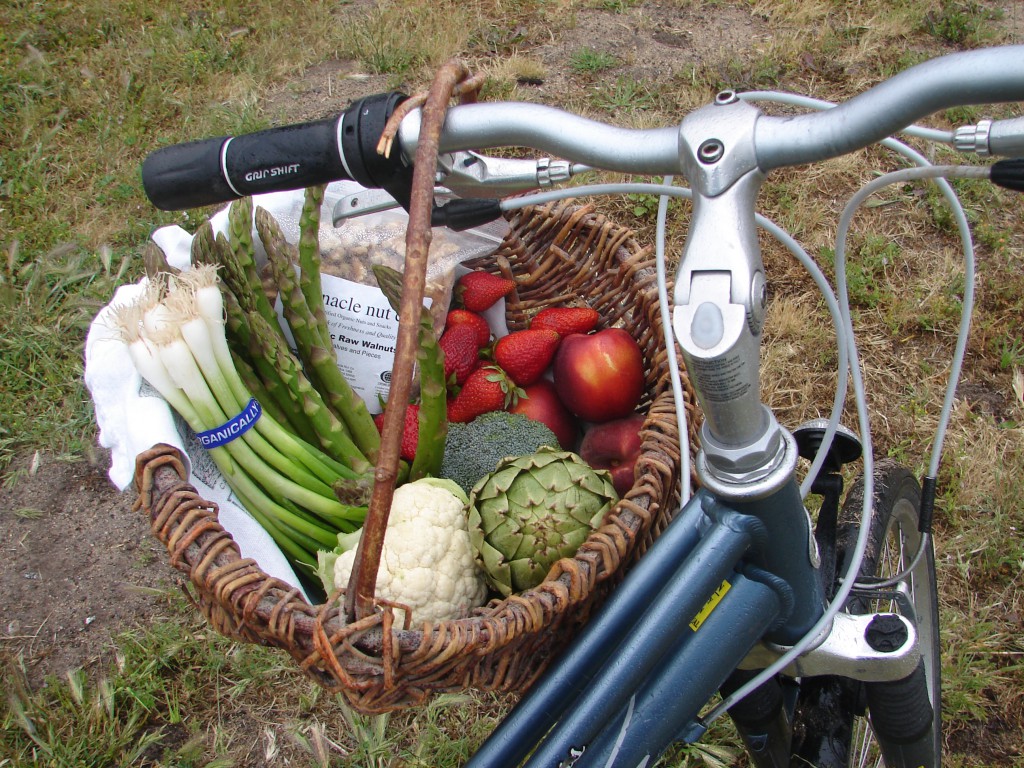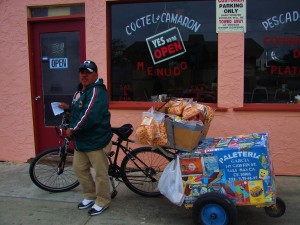Posted by Founder, Bicycling Monterey
Salinas Valley, Salad Bowl of the Nation — Who could be hungry?
Some may wonder if Thomas Fuller’s story, “In a California Valley, Healthy Food Everywhere but on the Table,” New York Times, November 23, 2016, is an exaggeration of the facts. Is it? No.
Truth is, I even recognize names of some food-deficient people in Fuller’s story. I’m glad that, thanks to some community collaborators, it’s been possible to get two of those individuals a used bicycle, their first bikes. Used bikes have also been provided for a couple of field workers not mentioned in the story.
I wish it were as easy to ensure that they and other agricultural workers had sufficient healthy food.
Please note: Photos in this post include some taken in Greenfield and elsewhere in the Salinas Valley. The photos are included as illustrations only. They are not to be interpreted as implying that those people or places are related to the content.
Too often I’ve seen firsthand a lack of food in Salinas Valley field workers’ homes. I also remember well a February 26, 2012 meeting in Greenfield, organized by California Rural Legal Assistance. CRLA put on the meeting to share with strawberry workers and others information about methyl iodide.
I’d never been to the school where the meeting would be held. Arriving early, outside the schoolyard, I asked a boy approximately age 11 whether this was where the meeting about strawberries and methyl iodide was taking place.
The boy answered: “No, this is the meeting where you go to get a box of food.”
It was both. After quietly sitting through the presentation, as soon as it ended, the room grew lively as families dashed to the back. Each one was eager to get a free box of fresh produce before the supply might run out.
If you’ve looked over Bicycling Monterey’s Spanish resources compilation, you’ve seen the chart below, which shows median household incomes in Monterey County. Most ag workers reside in those first seven cities, not, e.g., in Carmel or Pacific Grove (or Pebble Beach, which, as a private community, isn’t on the chart).
As Natividad Medical Foundation’s Indigenous Interpreting + can tell you, family incomes for most South Monterey County field workers are extremely low. That’s likewise true of ag laborers elsewhere in the county.
Thanks to Kera Abraham, Kevin Smith, and the Monterey County Weekly for permission to share the chart below, which was first published in the June 9, 2011 Monterey County Weekly.
Chart © Monterey County Weekly.
Whether regular meals or occasional treats, the lowest-priced foods, while more accessible for many local families, are often the lowest in nutrients too.
 To express gratitude for our Salinas Valley agricultural workers, consider participating in an easy social media action; download instructions here: salinas-feeds-america
To express gratitude for our Salinas Valley agricultural workers, consider participating in an easy social media action; download instructions here: salinas-feeds-america
#SalinasFeedsAmerica / #SalinasAlimentaNuestraNacion.
 To help change the situation of healthy food being scarce in many Monterey County homes is more complicated.
To help change the situation of healthy food being scarce in many Monterey County homes is more complicated.
For short-term solutions, consider donating to or volunteering with the Food Bank for Monterey County. Additional local organizations focused on this issue include Ag Against Hunger among others.
The Monterey County Health Department provides an infographic: “Hunger in Monterey County” 2016: http://www.mtyhd.org/index.php/hunger-in-monterey-county/
A December 2011 report is provided by the California Institute for Rural Studies (CIRS), “Salinas Valley Food Security Assessment and Planning Study”: http://www.cirsinc.org/rural-california-report/entry/food-insecurity-among-farm-workers-in-the-salinas-valley-california. The goal of that study was “To gain insight into the current level of food security among farmworkers in the Salinas Valley.” Study collaborators with CIRS included the Agriculture and Land Based Training Association (ALBA) and the Monterey County Health Department.
For how to get involved in correcting underlying causes, your research might begin with…
Food First / Institute for Food and Development Policy, founded in 1975 by Joseph Collins and Frances Moore Lappé. Years ago I read and admired Lappé’s work, including about water issues, myths regarding hunger, and more. For over 40 years, the Institute has been been well regarded as the primary think tank in the U.S. providing analyses of the root causes of hunger. A quick search of the Institute’s website today turned up sections such as Labor in the Food System, and related articles, e.g., “Hank Herrera Plants Seeds for Food Justice” and “What Does Food Justice Mean for Farmworkers?”
For other resources, check with your public library’s reference librarians.


Related posts on this site
Bike to Monterey County Farmers Markets
Shopping Farmers Markets by Bike–Have you hugged an organic grower today?
East Salinas / The Alisal: Pleasures, Protests, and Promise
This post was published on 25 November 2016. One or more changes last made to this post on 1 November 2017.
















